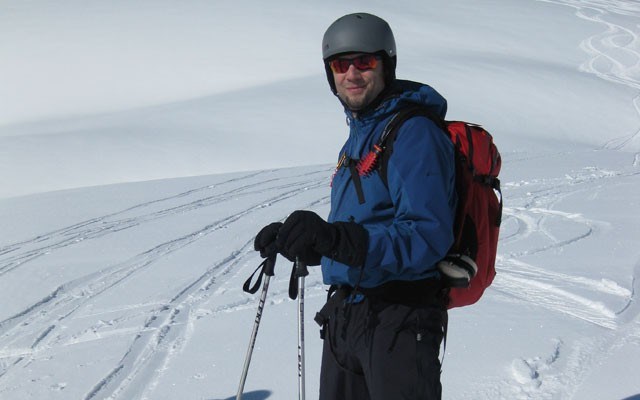Dr. Pascal Haegeli knows how difficult it can be to stand at the top of a snowy slope and make an evidence-based decision on whether or not it could slide.
He knows what it's like to put aside cold and hunger and tiredness, to filter the group decision making into the clinical facts.
And yet, he's also unwittingly triggered some small avalanches.
"Those situations highlight to me how important this research is," said the professor from Simon Fraser University's School of Resource and Environmental Management, who is also an avid backcountry skier.
Haegeli has just been named to the Faculty of Environment's new Research Chair in Avalanche Risk Management in an effort to understand more about these deadly natural hazards that kill on average 12 people each year in Canada. Roughly 80 per cent of all Canadian avalanche-related fatalities have taken place in B.C.
And in more than 90 per cent of fatal avalanches, somebody in the group has triggered the avalanche.
Traditionally, said Haegeli, avalanche safety programs have been focused on the idea of better understanding the slides themselves, with the idea that more knowledge about them would lead to better decision-making in the mountains.
"Unfortunately that's not necessarily the case," he said.
"Better understanding doesn't necessarily help people to make better decisions and so our objective here is to build on the existing knowledge of the hazards and add the human dimension to the research as well: What do people actually do with that information? How can we provide them with better information to make better-informed choices when they go out into the backcountry?"
The five-year project, with more than $1 million in funding, is a collaboration between SFU and some of the key stakeholders in the Canadian avalanche community.
These include: Canadian Pacific, Helicat Canada, Avalanche Canada Foundation, Avalanche Canada and the Canadian Avalanche Association.
"One of the new things is that the chair is broadly supported both by industry as well as the public avalanche safety side. Previously it was more focused on industry," explained Haegeli."With backcountry recreation becoming more and more popular, it's now great to see the broader support..., which will mean that our research will have a stronger benefit for the public side as well."
Haegeli has been working with partners like Whistler Heliskiing this year.
"We are studying how they select terrain for skiing that is appropriate for the current conditions," he said.
Ultimately, the goal is to better understand how avalanche risk is managed and that can then be the foundation of any future tools such as apps or maps.
"That all has to be determined," said Haegeli, "but I think there's lots of innovative ways that we could try to transfer that knowledge."




